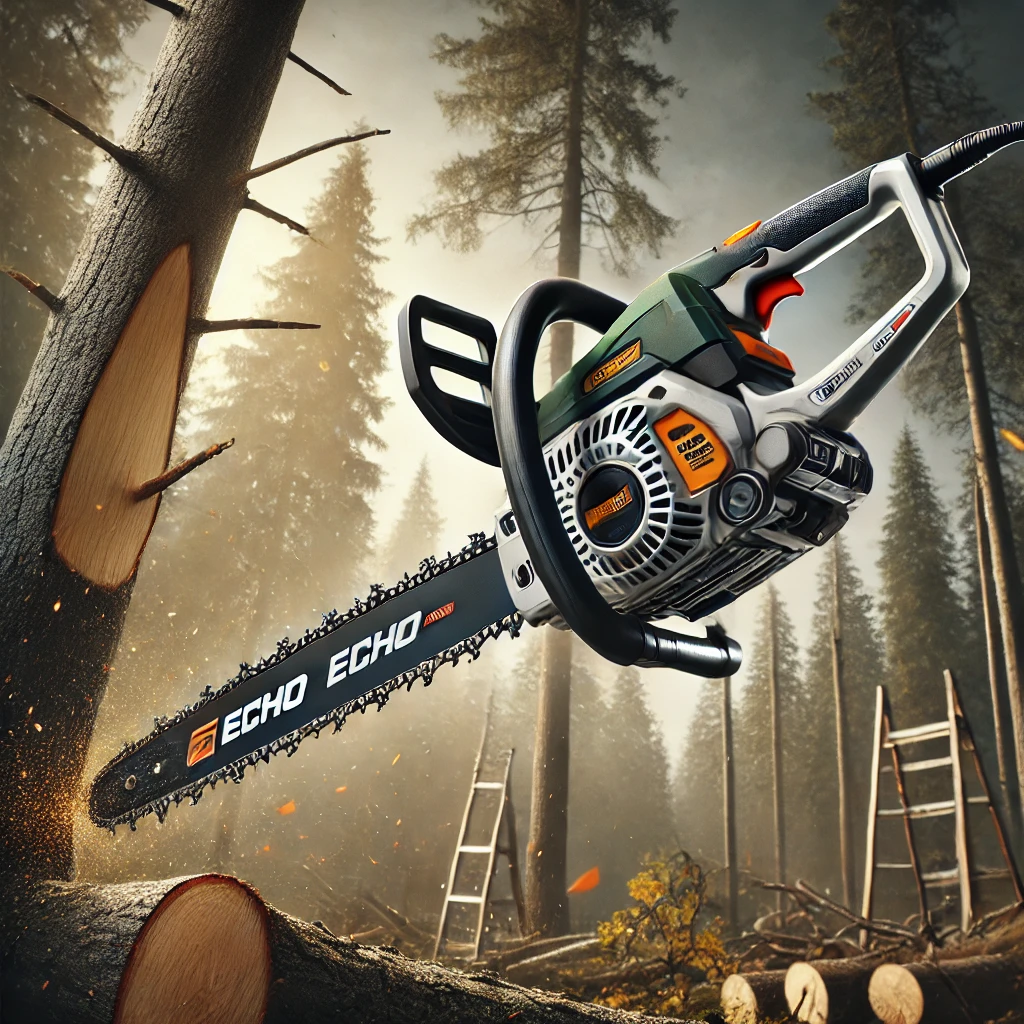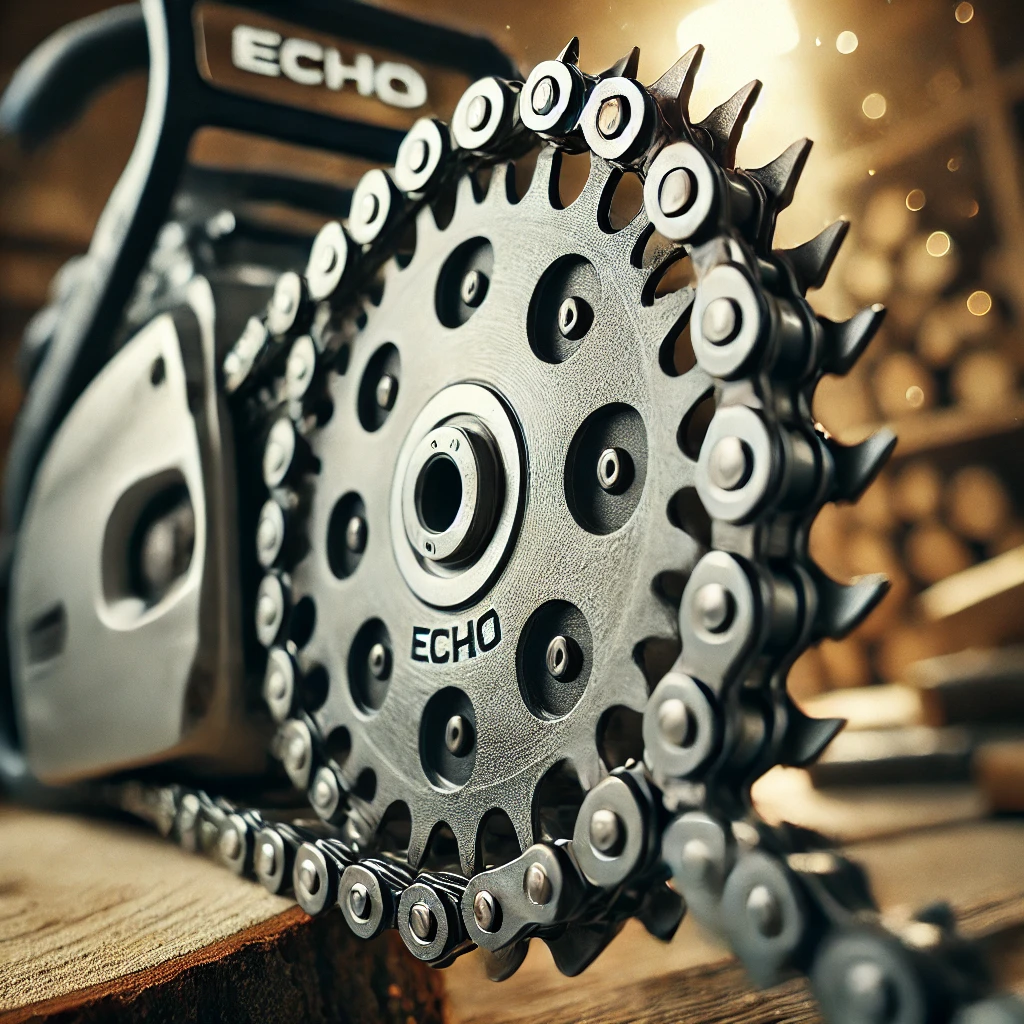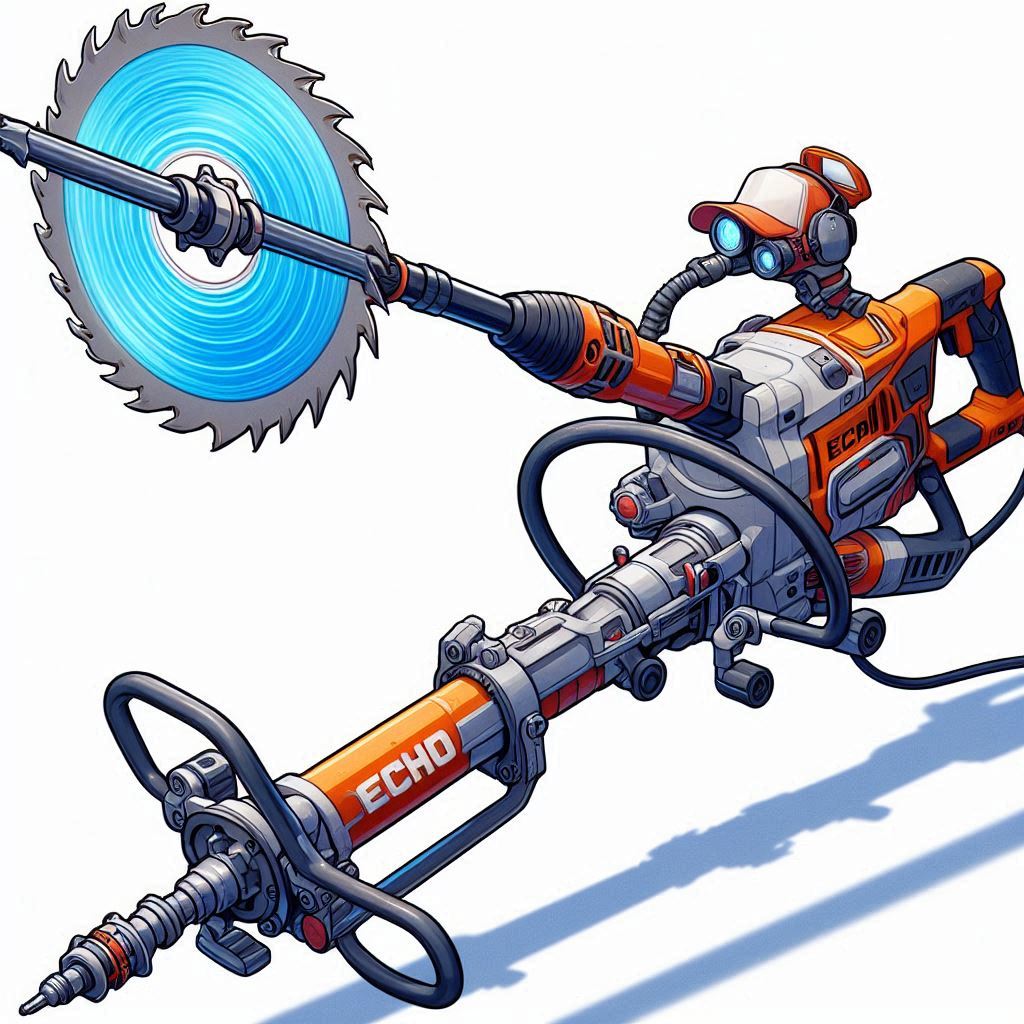Ever felt like your pole saw just isn’t cutting it—literally? I’ve been there. A few years ago, I was trying to trim a stubborn branch, and no matter how hard I pushed, my saw barely made a dent. Turns out, the blade was as dull as a butter knife. That’s when I discovered the magic of a Fiskars pole saw replacement blade—and trust me, it made all the difference.
If you’re tired of struggling with slow cuts or jagged branches, you might need a new blade too. But with options like the Fiskars pole saw replacement blade with hook, different blade sizes, and even choices between Fiskars vs. Stihl replacement blades, how do you pick the right one? Don’t worry—I’ve got you covered.
In this guide, I’ll break it all down in simple, no-nonsense terms—from spotting when it’s time for a replacement to choosing the best size for your pole saw (yes, there’s a difference between 15-inch vs. 18-inch blades). So, let’s dive in and get your saw cutting like new again!
Signs You Need a Fiskars Pole Saw Replacement Blade

Ever felt like you’re sawing through concrete instead of wood? I know the feeling. The first time I realized my pole saw blade was done for, I spent way too much time hacking at a branch, only to end up with a splintered mess. It was frustrating—and exhausting. If your saw isn’t cutting like it used to, your blade might be the problem.
So, how do you know when it’s time for a replacement? Here are the telltale signs:
1. Cutting Takes Too Long
A sharp pole saw blade should glide through branches with minimal effort. If you find yourself sawing back and forth endlessly with little progress, your blade has likely dulled. The longer it takes, the more energy you waste. A fresh blade makes cutting so much faster.
Quick Check: Try slicing through a small branch. If it takes more than a few strokes, your blade isn’t doing its job.
2. More Effort, Less Result
Ever pushed down hard on your pole saw, hoping it would cut faster? I’ve been guilty of this, and trust me, it’s a losing battle. A dull blade forces you to apply more pressure, making cutting a full-body workout instead of a simple task. The saw should be doing the work, not you.
Quick Fix: If you’re sweating more than sawing, your blade probably needs replacing.
3. Ragged or Splintered Cuts
A good pole saw blade slices cleanly, leaving behind smooth edges. If your cuts look rough, uneven, or splintered, that’s a major red flag. Jagged cuts can even stress the tree, making it vulnerable to disease.
Test It: Cut a small branch and inspect the edge. Clean cut? You’re good. Messy and frayed? Time for a new blade.
4. Rust, Bends, or Missing Teeth
Take a close look at your blade. If it’s rusted, bent, or missing teeth, that’s like trying to chop vegetables with a broken knife—it won’t end well. Even a small bend can throw off your cutting accuracy, making the pole saw feel unstable.
Check Your Blade: If it looks damaged, don’t wait—replace it now before it slows you down.
5. The Simple Test: Try a Thin, Dry Branch
One of the easiest ways to check if your blade is still sharp is by cutting a small, dry branch. A good blade will slice through effortlessly. A dull one will struggle, skip, or require extra force.
Try It Now: Grab your pole saw and test it on a thin branch. If you have to fight to get through it, your blade is past its prime.
Understanding Fiskars Pole Saw Replacement Blade Options

Not all pole saw blades are created equal. I learned this the hard way when I swapped my old blade for a new one without paying attention to the type. The result? A frustrating afternoon spent wondering why my cuts felt different. Turns out, Fiskars has multiple replacement blade options, and choosing the right one makes all the difference. Let’s break it down.
A. Standard Fiskars Replacement Blade vs. Blade with Hook
At first glance, you might think a pole saw blade is just… a blade. But Fiskars offers two main types: a standard replacement blade and a hook blade. Here’s what you need to know:
- Standard Fiskars Replacement Blade – This is your go-to for clean, straightforward cuts. It’s great if you’re just trimming branches and don’t need extra control over falling limbs.
- Blade with Hook – This one comes with a curved hook at the tip, which helps pull down cut branches. If you’ve ever had a freshly cut limb get stuck in the tree, you’ll appreciate how handy this hook can be.
When to Use a Hook Blade: If you’re working with thicker branches or need to control where they fall, go for the hooked version. It helps guide cut branches down, saving you from dodging falling limbs.
My Personal Pick: I personally prefer the hook blade, especially for high-up branches. It’s like having an extra hand to pull down cut wood. But if you only trim small, easy-to-reach branches, the standard blade works just fine.
B. Fiskars 15-Inch vs. 18-Inch Pole Saw Replacement Blade
Another big decision? Blade size. Fiskars makes both 15-inch and 18-inch replacement blades, but bigger isn’t always better.
- 15-Inch Blade – More maneuverable, lighter, and great for smaller, thinner branches.
- 18-Inch Blade – Longer, more aggressive, and better suited for thicker branches. But it requires more control and effort.
Which Size Works Best? If you mainly trim thin, manageable branches, stick with the 15-inch blade—it’s easier to handle. But if you often deal with larger limbs, the 18-inch blade gives you more reach and power.
Bigger Isn’t Always Better: I once thought the 18-inch blade would be the ultimate upgrade, but I quickly realized that it’s harder to maneuver in dense trees. Sometimes, a smaller, more precise blade is the smarter choice.
Which Fiskars Pole Saw Blade Fits Older Models?
Ever tried replacing a tool part, only to realize it doesn’t fit? Yeah, I’ve been there. I once ordered a Fiskars replacement blade without checking the specs, thinking, It’s Fiskars, so it should fit, right? Nope. Spent an hour trying to force it on before realizing the mounting holes didn’t match. Lesson learned.
If you have an older Fiskars pole saw, not every blade will work. But don’t worry—I’ll show you how to pick the right one without the guesswork.
How to Know If a Blade Will Fit Your Pole Saw
Fiskars has changed their blade designs over the years, so before you buy a new one, do this:
- Check How Your Current Blade Is Attached
- Remove the old blade and look at the mounting system.
- Some older models use a single-bolt design, while newer ones have two mounting holes.
- Find Your Model Number
- It’s usually printed on the pole or handle.
- Google it or check Fiskars’ website to find compatible blades.
- Measure the Mounting Holes
- Use a ruler to check the distance between holes (if your saw has two).
- Compare it with the specs of the replacement blade you want.
- Check Product Reviews
- Other buyers often mention if a blade worked on their older Fiskars model.
Quick Fix: Can’t find your model number? Just measure the blade length and hole spacing, then match it with a new one.
How Fiskars Has Changed Their Blades Over Time

Fiskars has updated their pole saw blade designs a few times. Here’s a quick breakdown:
- Older Models (Before 2010) – Most had a single-bolt attachment. These need specific replacements.
- Mid-2010s Models – Switched to dual-mounting holes, making it easier to swap blades.
- Recent Models (2020-Present) – Some have a quick-release system, so you don’t even need tools to change the blade.
Best Bet: If you have an older saw, universal replacement blades might be your best option. Some brands make aftermarket blades that fit Fiskars models no longer in production.
The Simple Trick to Find a Compatible Blade
Not sure if a blade will fit? Here’s a quick hack I use:
- Remove the old blade.
- Measure its length. Most Fiskars blades are 15 or 18 inches.
- Check the mounting hole spacing. If it doesn’t match the new blade, it won’t fit.
- Compare with replacement blade specs. Always check before buying!
Pro Tip: If the new blade is slightly longer, that’s fine. But if the holes don’t align, you’ll need to either drill new holes or find another blade.
Fiskars vs. Stihl Pole Saw Replacement Blades – Which One Wins?
If you’ve ever wondered, Is Stihl better than Fiskars?, you’re not alone. I had the same question when I needed a new blade. Fiskars is a go-to brand, but Stihl is known for heavy-duty cutting power. So, I put both to the test. Here’s what I found.
Which Blade Stays Sharp Longer?
A pole saw blade is only as good as its sharpness. A dull blade slows you down, makes cutting harder, and leaves jagged edges instead of clean cuts.
- Fiskars Blades – Stay sharp for moderate use, but after cutting through thick branches, they start to lose their edge. I had to sharpen mine after a few months.
- Stihl Blades – These stay sharper longer, especially when cutting hardwood branches. I used a Stihl blade for months before noticing any dullness.
Winner: Stihl—It holds its sharpness better over time, meaning less maintenance.
Steel Quality: Are Stihl Blades Tougher?
The quality of the steel makes a huge difference in how long a blade lasts.
- Fiskars uses hardened steel, which is durable and resistant to rust, but not as tough as Stihl.
- Stihl uses high-carbon steel, which is harder and holds an edge longer, even with frequent use.
Winner: Stihl—Its high-carbon steel makes it more durable for heavy-duty cutting.
Ease of Replacement: Fiskars vs. Stihl Designs
Nobody wants to struggle with changing a blade. Here’s how both compare:
- Fiskars – Most Fiskars pole saws use a simple bolt system. A screwdriver is all you need to swap blades in a few minutes.
- Stihl – Some Stihl blades require extra tools, and not all fit standard pole saws. If you’re replacing a blade on a Stihl pole saw, it’s easy. But fitting a Stihl blade on a Fiskars saw? Not always simple.
Winner: Fiskars—Its easy bolt system makes replacement faster.
Price vs. Performance: Is Stihl Worth the Extra Money?
Stihl blades are more expensive, but do they justify the price?
- Fiskars blades are more budget-friendly. They’re great for occasional use and DIY tree trimming.
- Stihl blades cost more, but you get longer-lasting sharpness and better performance for heavy-duty work.
Best for Budget: Fiskars—A solid, affordable choice for light to moderate use.
Best for Heavy Use: Stihl—If you’re cutting a lot of thick branches, it’s worth the investment.
How to Replace a Fiskars Pole Saw Blade (Step-by-Step Guide)
Replacing a Fiskars Pole Saw Replacement Blade might sound complicated, but trust me—it’s easier than you think. The first time I did it, I expected a long, frustrating process. Instead, it took me less than five minutes!
If your blade is dull, bent, or rusted, follow these simple steps to swap it out and get back to smooth, effortless cutting.
What You’ll Need
A screwdriver (most Fiskars models only need this)
A new Fiskars replacement blade
Work gloves (to protect your hands)
Lubricant or anti-rust spray (optional but helpful)
Pro Tip: Before you start, work on a flat surface and lay down a cloth or towel. This prevents small screws from rolling away.
Step 1: Remove the Old Blade Safely
First things first—safety matters. Fiskars Pole Saw Replacement Blade are sharp, even when dull.
- Lay the saw down flat on a sturdy surface.
- Find the mounting screws that attach the blade to the pole.
- Use your screwdriver to loosen and remove the screws.
- Carefully lift the old blade off and set it aside.
Quick Tip: If the screws are rusty or stuck, spray a little WD-40 or lubricant to loosen them up.
Step 2: Align the New Blade Properly
Not all blades fit the same way, so take a moment to align it correctly.
- Match the mounting holes of the new blade with the pole saw’s bracket.
- Check that the cutting edge faces the right direction (curved side outward).
- Hold the blade steady to keep it from shifting while attaching the screws.
Pro Tip: If you’re using a hooked blade, position it so the hook points downward—this helps pull branches after cutting.
Step 3: Secure It Tightly (So It Won’t Wobble!)
The last thing you want is a loose blade wobbling while you’re cutting.
- Insert the screws back into place and tighten them by hand first.
- Use your screwdriver to secure them fully, but don’t over-tighten.
- Give the blade a gentle wiggle—it should feel firm and stable.
Final Check: If the blade shifts even slightly, tighten the screws a little more. A loose blade can reduce cutting accuracy and make trimming unsafe.
Bonus: Quick Maintenance Tips for a Longer-Lasting Blade
Now that your new blade is installed, let’s keep it in top shape:
Wipe the blade after every use to remove sap and debris.
Store your pole saw in a dry place to prevent rust.
Lightly oil the blade every few weeks to keep it smooth.
Pro Tip: If your screws tend to rust, coat them with a dab of lubricant before reinstalling. This keeps them from getting stuck the next time you replace the blade.
Maintaining Your New Fiskars Pole Saw Blade for Long Life
So, you’ve got your new Fiskars Pole Saw Replacement Blade installed. It’s sharp, cuts like butter, and makes trimming trees easier than ever. But how do you keep it that way?
I learned the hard way that neglecting blade maintenance means replacing it way sooner than necessary. With a little care, your blade can stay razor-sharp for years. Here’s how.
How to Keep Your Blade Sharp for Years
A dull blade is frustrating and inefficient. The best way to avoid this? Regular maintenance.
- Wipe down the blade after each use. Sap and debris dull the cutting edge over time. A quick wipe with a damp cloth keeps it clean.
- Sharpen the blade as needed. If you notice your cuts becoming rough or taking more effort, it’s time to sharpen. A simple flat file or carbide sharpener works well.
- Use your blade correctly. Avoid twisting or forcing it through branches—this wears it down faster. Let the saw do the work!
Quick Tip: Test your blade’s sharpness by cutting a thin, dry branch. If it glides through easily, you’re good. If not, it’s time to sharpen or replace.
Best Way to Clean Off Sap and Debris

Tree sap is sticky, stubborn, and hard on your blade. If left unchecked, it dulls the teeth and reduces cutting efficiency.
- After every use, wipe the blade with a dry cloth.
- If sap builds up, use rubbing alcohol or soapy water to break it down.
- For tough residue, a soft-bristle brush can help scrub it off.
Pro Tip: Avoid using harsh chemicals like bleach or acetone—they can weaken the steel over time.
Proper Storage to Prevent Rust
Rust is a blade’s worst enemy. Even a little moisture can lead to corrosion.
- Store your pole saw indoors—never leave it outside in damp conditions.
- Keep it dry. If your blade gets wet, dry it off immediately with a towel.
- Lightly oil the blade every few weeks. A small amount of WD-40 or machine oil prevents rust and keeps the metal smooth.
Best Practice: Store your pole saw horizontally or hang it up to avoid unnecessary pressure on the blade.
When to Sharpen vs. When to Replace
At some point, even the best blades wear out. But how do you know if it just needs sharpening or a full replacement?
Sharpen Your Blade If:
It cuts slower than usual, but still works.
The edges look slightly dull but aren’t damaged.
You haven’t sharpened it in a while.
Replace Your Blade If:
- The teeth are bent, chipped, or missing.
- It takes way too much effort to cut even thin branches.
- The blade wobbles or feels unstable, even after tightening.
Rule of Thumb: If sharpening doesn’t fix the problem, it’s time for a replacement blade.
Where to Buy the Best Fiskars Pole Saw Replacement Blade
Buying a new Fiskars blade should be easy. But with so many options, it’s easy to pick the wrong one. I once bought a cheap off-brand blade to save money. Big mistake! It didn’t fit well, and after a few uses, it was dull.
To avoid the same problem, here’s where to find the best replacement blade—without wasting time or money.
Official vs. Aftermarket Blades – Which One is Better?
There are two types of replacement blades:
Official Fiskars Blades – Made by Fiskars. These are durable, sharp, and guaranteed to fit.
Aftermarket Blades – Made by other brands. Some work well, but many don’t last long or fit poorly.
Best Option? Stick with official Fiskars blades for quality and perfect fit. If buying aftermarket, check reviews before purchasing.
Quick Tip: Look for “Genuine Fiskars Blade” in the product name. If it says “Compatible with Fiskars,” double-check before buying.
Best Places to Buy a Fiskars Replacement Blade
Buying online gives you more options and better prices. Here are the best places to shop:
- Amazon – Largest selection, fast shipping. Always check customer reviews before buying.
- Fiskars Official Website – The safest place to buy authentic replacement blades.
- Home Depot & Lowe’s – Reliable retailers with easy returns and in-store pickup.
- Ace Hardware – Good for checking the blade in person before you buy.
- eBay – You can find discounts, but be careful of used or generic blades.
Buying at a Local Hardware Store – What to Ask
If you prefer shopping in person, ask these questions before buying:
- Is this an official Fiskars blade? Some stores sell generic versions next to the real ones.
- What’s the return policy? If it doesn’t fit, can you exchange it?
- Do you have both sizes? Fiskars blades come in 15-inch and 18-inch.
Pro Tip: Bring your old blade with you to compare hole spacing and size before buying.
Bonus Tips: Getting the Most Out of Your Fiskars Pole Saw Blade
A sharp blade is great. But using it the right way makes a huge difference. With a few simple tricks, you can cut faster, work safer, and make your blade last longer.
Here are my best Fiskars Pole Saw Replacement Blade hacks to boost performance and avoid common mistakes.
The Right Cutting Technique for Effortless Trimming
Sawing through branches shouldn’t feel like a workout. If you’re struggling, you’re probably using the wrong technique.
Start with light strokes – Let the blade do the work. Pressing too hard makes cutting harder.
Use a steady back-and-forth motion – This keeps the blade from getting stuck.
Cut at a slight angle – This helps remove sawdust and keeps the cut smooth.
For thick branches, use the “notch & slice” method – First, make a small notch. Then, saw through from the opposite side.
Pro Tip: If the blade gets stuck, stop sawing. Wiggle it free and restart at a different angle.
How to Avoid Getting Stuck in Thick Branches
Few things are as frustrating as a blade stuck halfway through a branch. Here’s how to avoid it:
Don’t push down too hard – Too much force causes binding.
Don’t cut too fast – Rushing leads to jagged edges and jams.
Trim small branches first – If the branch is thick, remove smaller limbs before making the final cut.
Use a hook blade for better control – It helps pull down branches after cutting.
Quick Fix: If your blade gets stuck, rock the saw gently to loosen it instead of pulling hard.
Should You Oil Your Blade? (Debunking the Myth)
There’s a lot of debate about oiling Fiskars Pole Saw Replacement Blade. Some say it reduces friction, while others think it attracts debris. Here’s the truth:
Yes! A little oil helps prevent rust and makes cutting smoother.
No! Don’t use too much oil—it can make sawdust stick to the blade.
Best practice? Lightly coat the blade with WD-40 or machine oil every few weeks. Wipe off excess oil before using the saw.
Pro Tip: If you’re cutting sappy trees, oil the blade before and after use to prevent gunk buildup.
How to Extend Your Pole Saw’s Reach (Safely!)
Need a few more feet of reach? Here’s what to do instead of stretching dangerously:
Adjust the pole length properly – A longer pole helps, but don’t overextend it.
Use a rope-and-pulley system – If your saw has one, it makes high cuts easier.
Stand on solid ground – Never use a ladder with a pole saw—it’s too risky.
Angle the saw for better leverage – Cutting from the side instead of directly underneath makes reaching easier.
What NOT to do: Never tape two poles together. It’s unsafe and weakens control.
Safe Tip: If the branch is too high, use a longer pole saw or call a professional.
Quick Blade Maintenance Hack: Keep It Razor-Sharp
Even the best blades dull over time. But a simple trick can keep yours sharp longer.
After every use, wipe the blade clean – Sap and dirt make the edge dull.
Sharpen the teeth every few months – Use a small carbide sharpener or flat file.
Store the saw in a dry place – Rust is a blade’s worst enemy.
Check the screws – Loose screws cause wobbling, which wears the blade down faster.
Pro Tip: If you cut a lot of thick branches, sharpen your blade once every 3-5 uses for the best results.
This video owner name: Tom Leeman
Final Thoughts: My Recommendation for the Best Fiskars Replacement Blade
After testing multiple Fiskars Pole Saw Replacement Blade, I finally found my go-to pick—the one that delivers smooth, effortless cuts every time.
My Personal Pick & Why I Love It
Best Overall: Fiskars 15-Inch Replacement Blade with Hook
Why? It’s the perfect balance of sharpness, durability, and ease of use. The hook feature is a game-changer—it helps grab and pull down cut branches, saving me from dodging falling limbs!
Razor-sharp teeth – Slices through branches like butter.
Hooked tip for extra control – No more stuck branches.
Perfect size – 15 inches gives me the right mix of power and precision.
Long-lasting – Stays sharp longer than cheaper blades.
Pro Tip: If you cut a lot of thicker branches, the 18-inch Fiskars blade is a solid choice. But for most jobs, the 15-inch hooked blade is all you need.
Quick Recap: What to Remember Before Buying
Check compatibility – Make sure the blade fits your Fiskars model.
Pick the right size – 15-inch for general trimming, 18-inch for big branches.
Decide between a standard or hooked blade – The hook makes branch removal easier.
Choose quality over price – A cheap blade won’t last and can make cutting frustrating.
Keep it sharp – Regular maintenance means fewer replacements.
Your Turn! Share Your Experience
Have you replaced your Fiskars Pole Saw Replacement Blade before? What worked best for you? Drop a comment below—I’d love to hear your thoughts!
If this guide helped you, share it with other DIYers and tree-trimming pros! Let’s keep our tools sharp and our cuts clean.




Leave a Reply